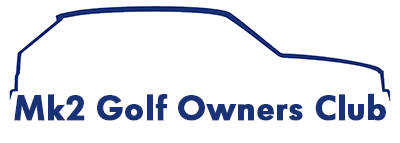Digifant engine management system

The Digifant engine management system is an electronic engine control unit (ECU), which monitors and controls the fuel injection and ignition systems in petrol engines, designed by Volkswagen Group, in cooperation with Bosch.
Digifant is the Digijet fuel injection system first used on water-cooled Volkswagen A2 platform-based models.
Digifant was introduced in 1986 on the 2.1 litre Volkswagen Type 2 (T3) (Vanagon in the US) engine. This system combined digital fuel control as used in the earlier Digi-Jet systems with a new digital ignition system. The combination of fuel injection control and ignition control is the reason for the name "Digifant II" on the first version produced. Digifant as used in Volkswagen Golf and Volkswagen Jetta models simplified several functions, and added knock sensor control to the ignition system. Other versions of Digifant appeared on the Volkswagen Fox, Corrado, Volkswagen Transporter (T4) (known as the Eurovan in North America), as well as 1993 and later production versions of the rear-engined Volkswagen Beetle, sold only in Mexico. Lower-power versions (without a knock sensor), supercharged, and 16-valve variants were produced. Nearly exclusive to the European market, Volkswagen AG subsidiary Audi AG also used the Digifant system, namely in its 2.0 E variants of the Audi 80 and Audi 100.
Digifant is an engine management system designed originally to take advantage of the first generation of newly developed digital signal processing circuits. Production changes and updates were made to keep the system current with the changing California and federal emissions requirements. Updates were also made to allow integration of other vehicle systems into the scope of engine operation.
Changes in circuit technology, design and processing speed along with evolving emissions standards, resulted in the development of new engine management systems. These new system incorporated adaptive learning fuzzy logic, enhanced and expanded diagnostics, and the ability to meet total vehicle emissions standards.
Fuel injection control is digital electronic. It is based on the measurement engine load (this signal is provided by the Air Flow Sensor), and on engine speed (signal provided by the hall sender in the distributor). These primary signals are compared to a 'map', or table of values, stored in the Engine Control Module (ECM) memory.
The amount of fuel delivered is controlled by the duration of actuation of the fuel injector(s). This value is taken from a programme in the ECM that has 16 points for load and 16 points for speed. These 256 primary values are then modified by coolant temperature, intake air temperature, oxygen content of the exhaust, car battery voltage and throttle position - to provide 65,000 possible injector duration points.
Digifant is unlike the earlier CIS and CIS-E fuel injection systems that it replaced, in that fuel injectors are mounted on a common fuel rail. CIS fuel injection systems used mechanical fuel injectors. The fuel injectors are wired in parallel, and are supplied with Constant System Voltage. The ECM switches the earth/ground on and off to control duration. All injectors operate at the same time (simultaneously, rather than sequentially) each crankshaft revolution; two complete revolutions being needed for each cylinder to receive the correct amount of fuel for each combustion cycle.
Ignition system control is also digital electronic. The sensors that supply the engine load and engine speed signals for injector duration provide information about the basic ignition timing point. The signal sent to the Hall control unit is derived from a programme in the ECM that is similar to the injector duration programme.
Engine knock control is used to allow the ignition timing to continually approach the point of detonation. This is the point where the engine will produce the most motive power, as well as the highest efficiency.
Additional functions of the ECM include operation of the fuel pump by closing the Ground for the fuel pump relay, and control of idle speed by a throttle plate bypass valve. The Idle Air Control Valve (IACV) (previously known as an Idle Air Stabiliser Valve - IASV), receives a changing milliamp signal that varies the strength of an electromagnet pulling open the bypass valve.
Idle speed stabilisation is enhanced by a process known as Idle Speed Control (ISC). This function (previously known as Digital Idle Stabilization), allows the ECM to modify ignition timing at idle to further improve idle quality.
 Topic: Digifant engine management system (Read 3095 times)
previous topic - next topic
Topic: Digifant engine management system (Read 3095 times)
previous topic - next topic
